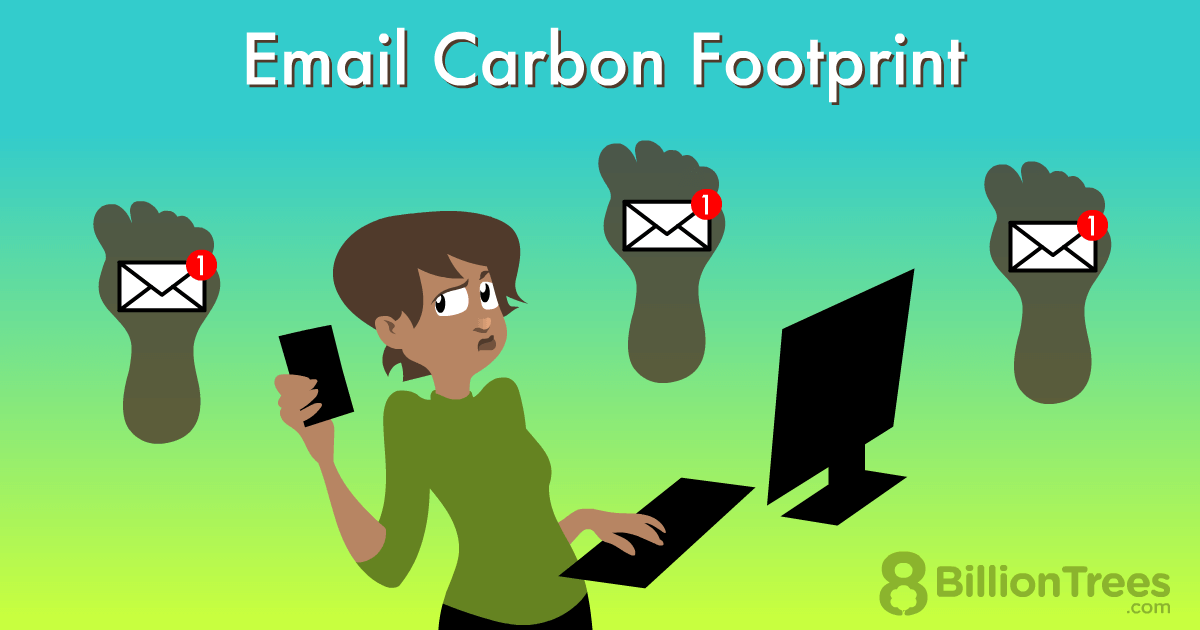Sending an e-mail emits CO2 too

Being conscious sustainability using IT
eyesonsuriname
Amsterdam, March 17, 2023 — If I’m going to send an email, or I’m going to listen to my favorite music online, see a movie, search online for new clothes or just go surfing just for the fun of it.
Then there is actually no realization that my online behavior ultimately has a significant impact on the environment.
For example, you emit 4 grams of CO2 when sending an email and 50 grams if it has a heavy attachment. And an average website emits 1.76 grams of CO2 per page view.Because servers play an important role in this, the green cloud is an important emerging cloud trend.So more than time to embrace sustainability and see how you can switch to a green cloud strategy.
Sustainability in the IT industry
Ten years ago, being future-proof meant that your organization could properly anticipate technological change.Nowadays that is no longer enough. Today, the future-proofing of your company depends on the extent to which you are able to reduce your negative impact on the climate.Not only to be successful today, but to remain so for generations and generations.

Aviation is seen by many people as one of the biggest environmental polluters.Those who book a flight from London to Frankfurt will be irrevocably criticized. But if you enter a random search on Google, you will hear nothing. And that while the impact on the environment is also considerable.It depends on which subject is currently under a magnifying glass.Few companies and even fewer consumers realize that the international IT sector emits as much CO2 as aviation in the pre-COVID era.And under the influence of increasing pressure from climate interest groups, there is also a growing awareness that computing servers are responsible for about 29 percent of the CO2 emissions within the IT sector.

Consumers have favored green companies for years.Many organizations naturally try to respond adequately to this, for example by building a website that is as sustainable as possible.For every company, regardless of size, type and industry, there are countless opportunities for environmentally conscious, sustainable options.In addition to the need to comply with laws and regulations and to build goodwill, sustainable adaptations often also promote compliance, revenue and efficiency of your organization.And that while you actively contribute to the larger goal that we must all work mercilessly hard for: averting a global climate catastrophe.Green is good: for the planet and your businessTraditionally, performance figures have long dominated and sustainability has been of secondary importance. We now know for certain that this strategy is no longer sufficient.

By implementing a sustainable strategy, that approach takes on a different twist. An important part of this is migrating to a green cloud. Organizations with a migration from on-premises to the cloud can achieve energy savings of around 65 percent and a reduction in CO2 emissions of 84 percent.This can even reach 98 percent if you develop applications that are specifically focused on the cloud.Infrastructure as a Service (IaaS) comes to the rescue in this case.Organizations migrating from on-premises to the cloud can achieve energy savings of around 65% and a reduction in CO2 emissions of 84%Introducing sustainability as a KPI has only advantages for an organization.No costs for non-compliance for exceeding set CO2 standards, an improved efficiency of your existing resources, resulting in a greater ROI, and a boost for your reputation as a sustainable company.
How do you prepare for the transition to a green cloud?
To kick in an open door right away: every successful transition starts with drawing up the right roadmap before you can reap the proverbial ‘green’ benefits of the cloud transformation.
Step 1: Make an inventory of which green cloud suppliers there are
In recent years, fearing negative effects, many countries have reduced their dependence on nuclear energy, traditionally a reliable, if controversial, source of CO2-free energy.
As a result, an important part of green compute depends on the meteorological conditions of a location. After all, solar and wind energy depend on the sun and wind.
These changing weather conditions limit providers in the green schemes they can facilitate. So make an inventory of which cloud supplier has the best green offer.

Step 2: Find the right match
Green cloud provider are located all over the world. Together they offer a wide range of potential solutions, each with its own advantages, disadvantages and limitations.
To understand what these cloud providers can add to your organization, you need to understand their individual propositions.
This makes choosing the supplier that is most suitable for your organization considerably easier.
Step 3: Map out your application landscape
A common pitfall in cloud transitions is that they are started with too limited a selection of their own activities. An incomplete picture of an organization is of course not a good idea for any exercise
sensible approach.
And especially with a green cloud migration, an incomplete picture is disastrous.
Success of the migration depends on an overall picture of 01) current applications, 02) servers and 03) workloads.
A sustainable approach forces the organization to adapt to external parameters, such as green energy schemes, different locations and time zones of sustainable data centers.
In other words: your IT landscape must be very flexible.
If you look with a critical eye, you can properly estimate which workloads will bend and which will die.
In short, it is wise to first accurately map out the IT landscape. Ask yourself the following four questions:
• Which applications do we no longer need?
• Which applications can we transfer to external suppliers?
• Which applications should we rebuild?
• Which applications are ready for the green transition and just need to be optimised?
Based on the answers to these questions, you know which workloads need compute immediately, and which are less time-sensitive.

This way you map out a clear, green route based on what your organization needs.
Knowing what adjustments your organization needs to make to meet green goals, and having a clear picture of how to implement those adjustments, gives you the key ingredients for a streamlined, effective migration process – without unnecessary or unnecessary costs.
After all, that is what sustainability is all about: efficiency.
Dedicated employees for a successful migration
A cloud transition can only be successful if employees understand it collectively.
If they don’t see the business point or purpose of it, the operation is doomed.
If you want your employees to invest enough time and effort into learning new skills, it is very important that they know why they should.
People often think – wrongly – that financial appreciation is an equal incentive for everyone in the organization.
Many migrations fail because of this.
The growing social awareness that sustainability is not a nice-to-have but an absolute must-have has made it a logical, concrete goal.
This makes it easier for organizations to emphasize the importance of green cloud migration and to give employees an intrinsic motivation.
Employees must be intrinsically motivated. The IT department in particular will be more enthusiastic about a transition that visibly contributes to a clear goal – sustainability, in this case.
Within five years your organization can be sustainable, something most companies don’t even dare to dream about. And a lot faster than the governments envision.
The road to get there is undoubtedly bumpy, but with the right amount of time, effort and attention, you can become the first and the best. Of all the difficult decisions you have to make on a daily basis, choosing a green cloud is one that will bring nothing but benefits to your organization.

The green route to progress and future-proofing
Yet a transition is without a complete picture of you
Mapping the application landscape is a daunting task for organizations with decades of legacy system history.
Still, a transition without a complete picture of your IT environment is a huge gamble. A gamble that may turn out well at first, but will eventually turn out irrevocably wrong.
The slightest setback can undermine your cloud migration.
It’s tempting to think that on-site architecture is an easier solution. Unfortunately: with on-premise software you will never become a sustainable organization. Scaling, standardizing, and optimizing cloud capabilities isn’t just a business-wise decision; it is the only way to become carbon neutral.
Today, sustainability is no longer just a goal of governments and industries; it is a belief that is increasingly ingrained in the consumer’s DNA.
Proclaiming on your website that you strive for sustainability is nice, but it is no longer enough.

Consumers want to see proof and mercilessly punish greenwashing. A company that is truly sustainable is miles ahead of its competitors. The cloud migration then becomes a goal that the entire organization supports.
Above all, it makes your organization future-proof.
The green cloud is still in development. Undoubtedly, new challenges will arise that we do not even know exist yet.
But the fact that the benefits are endless is beyond doubt.
eyesonsuriname









